Express Scripts
Corporate and B2B Platform: Discovery & Definition Strategy


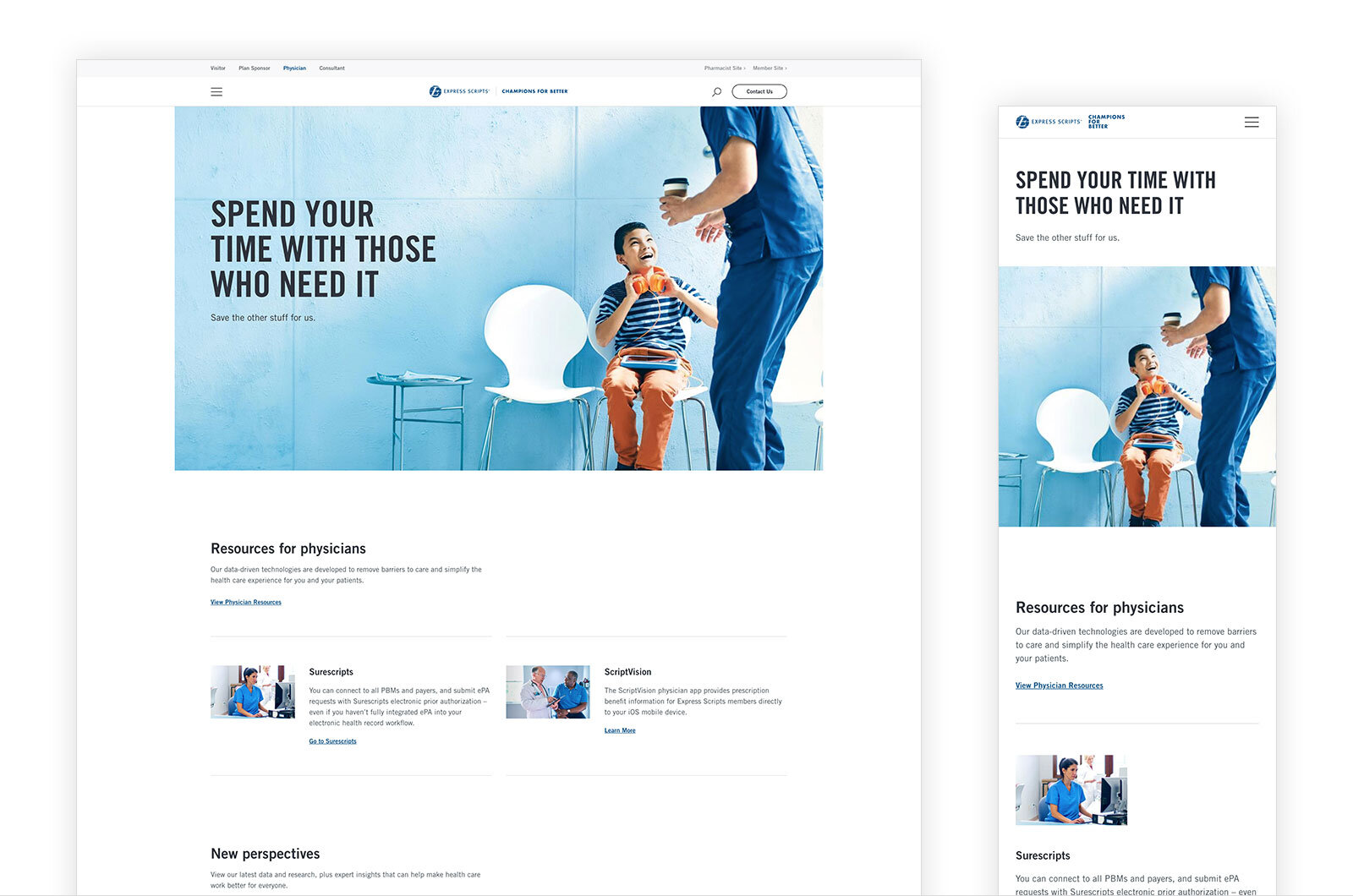
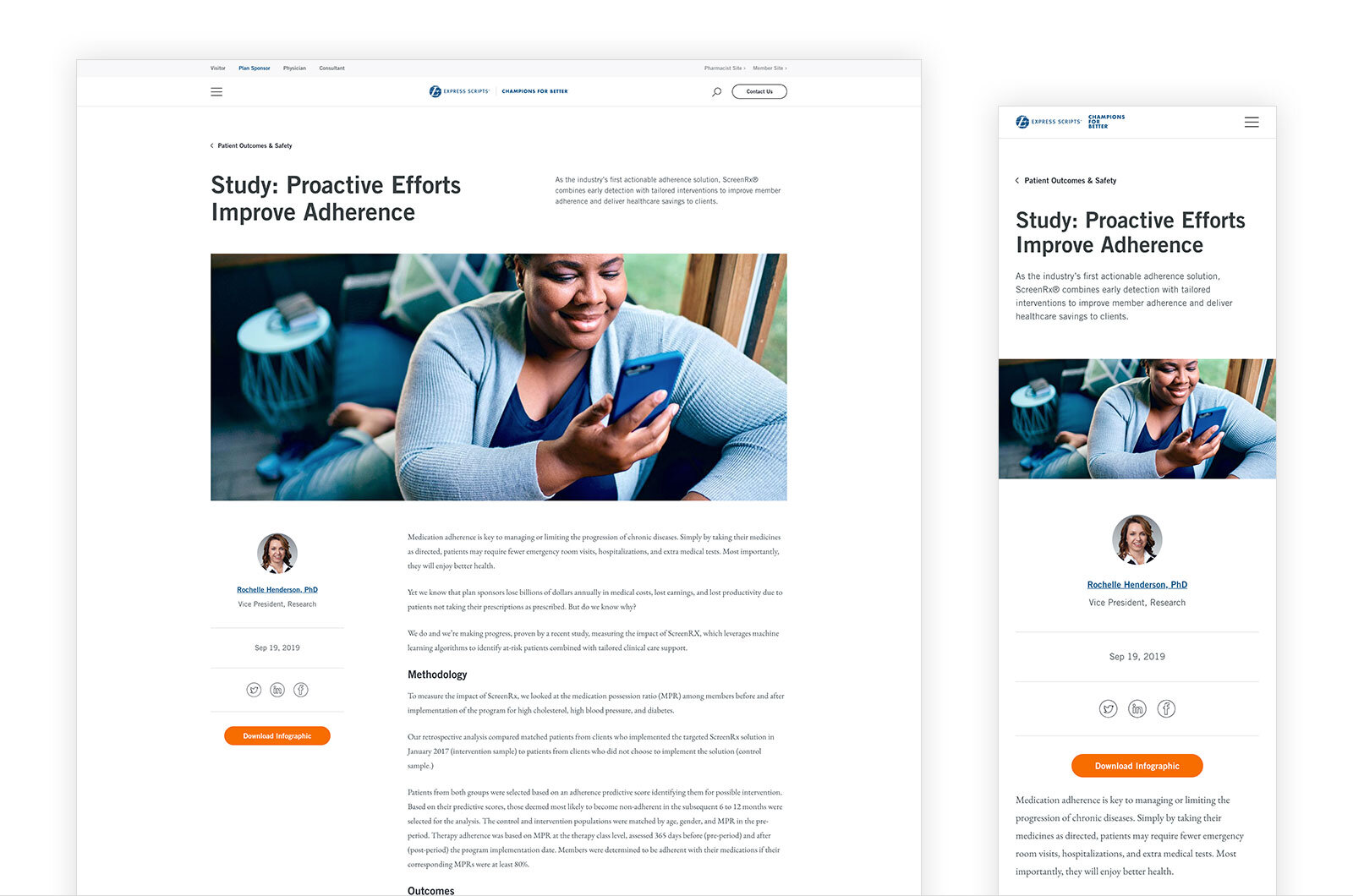
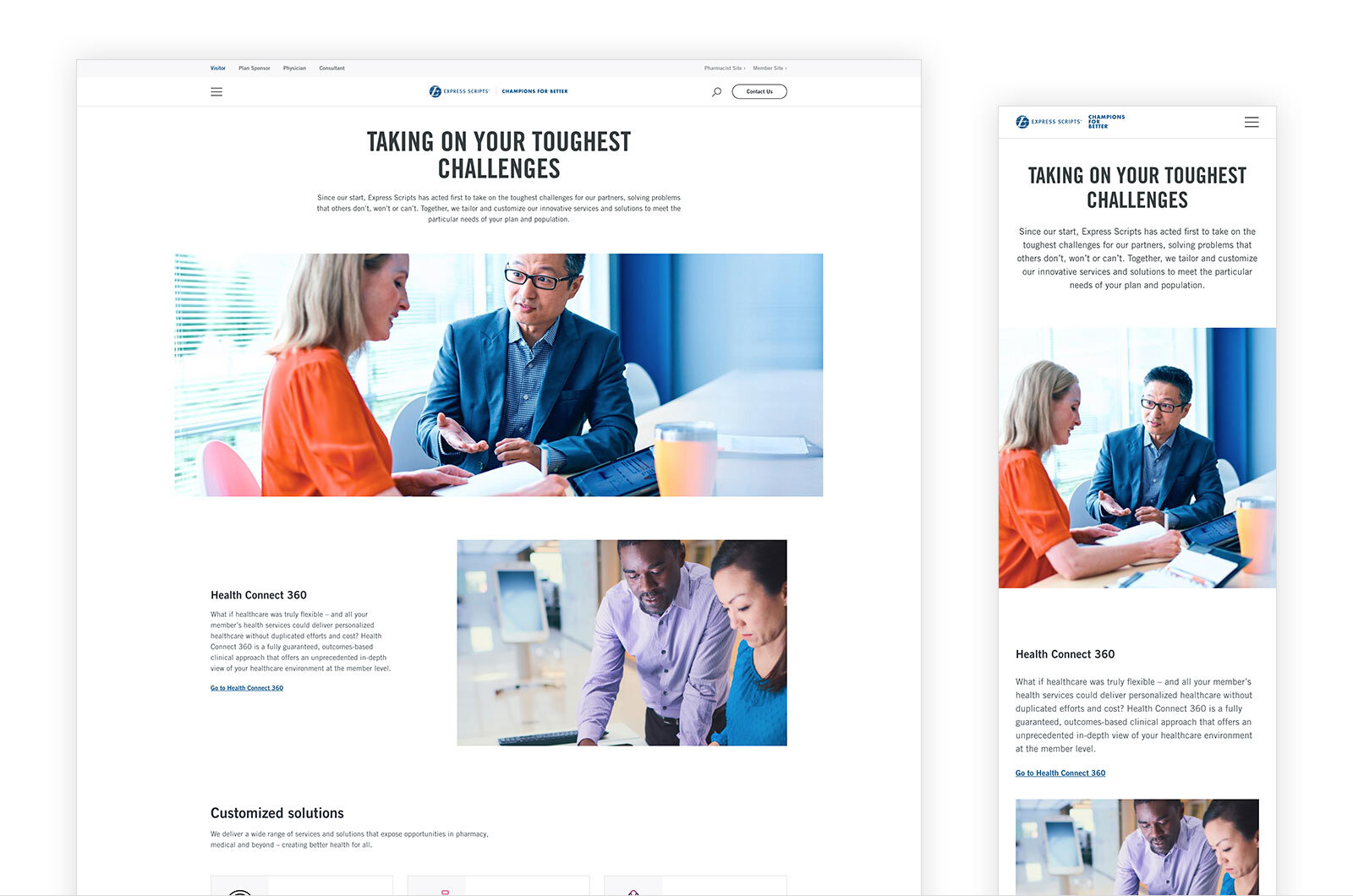
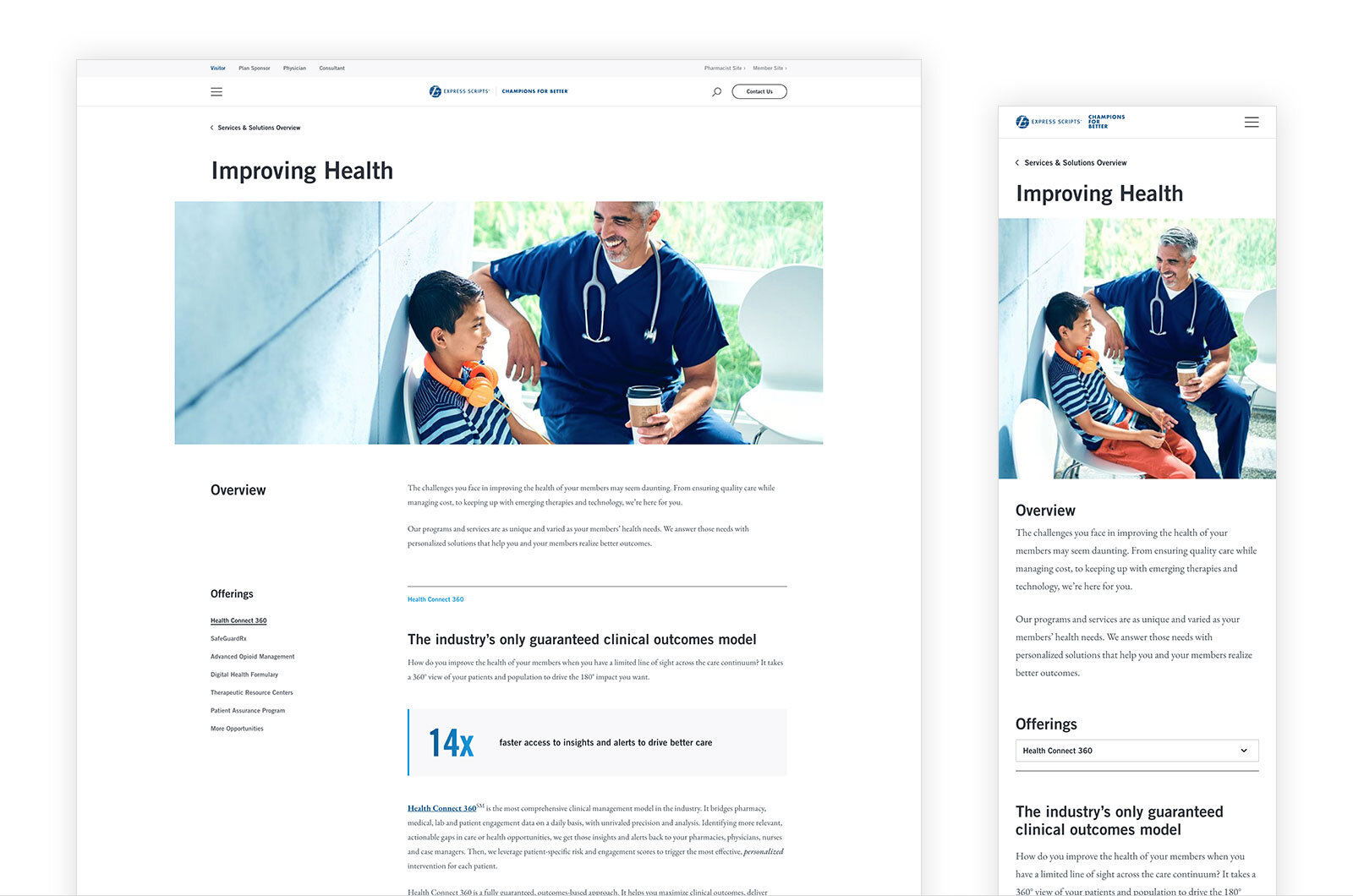
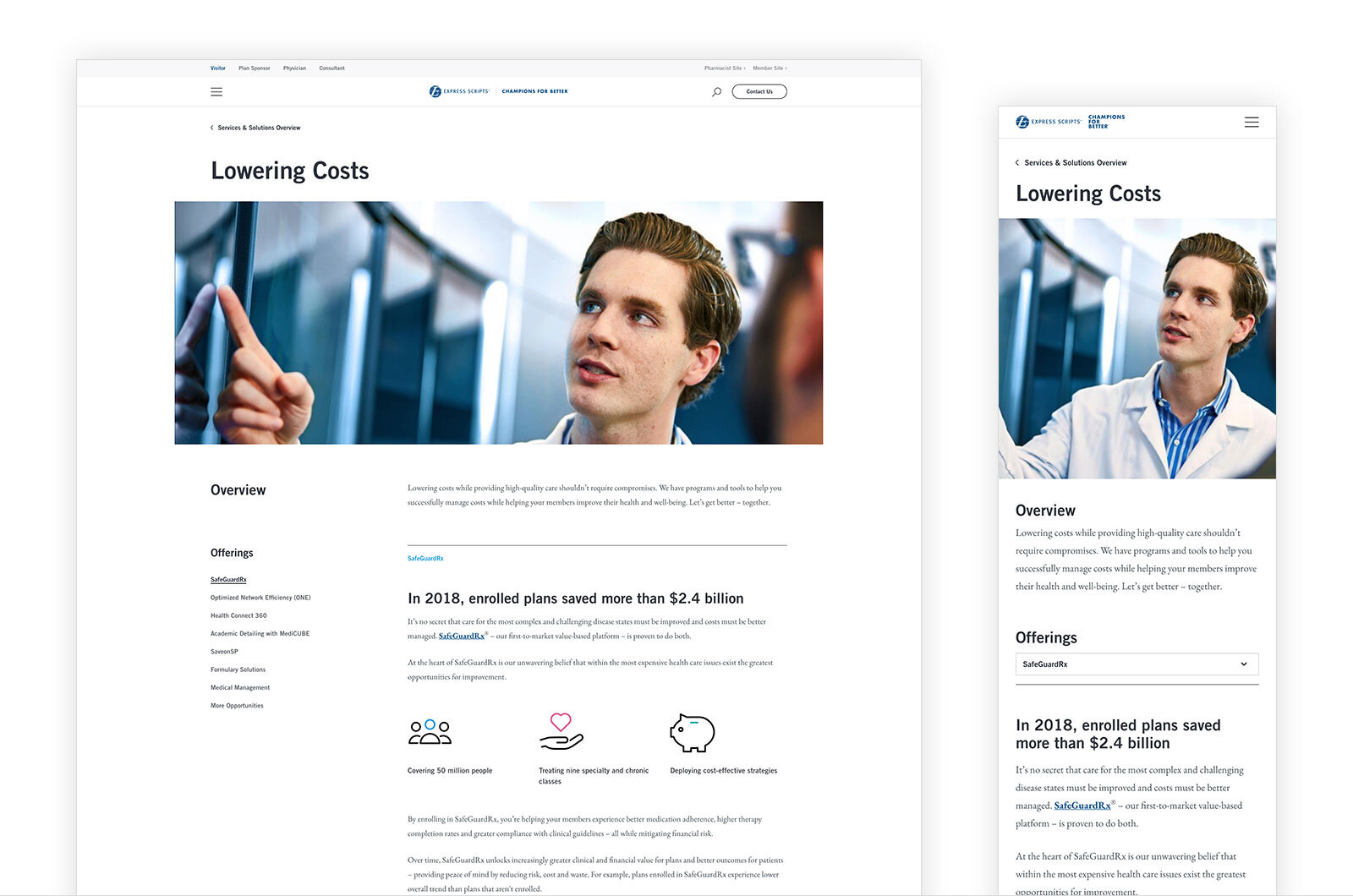
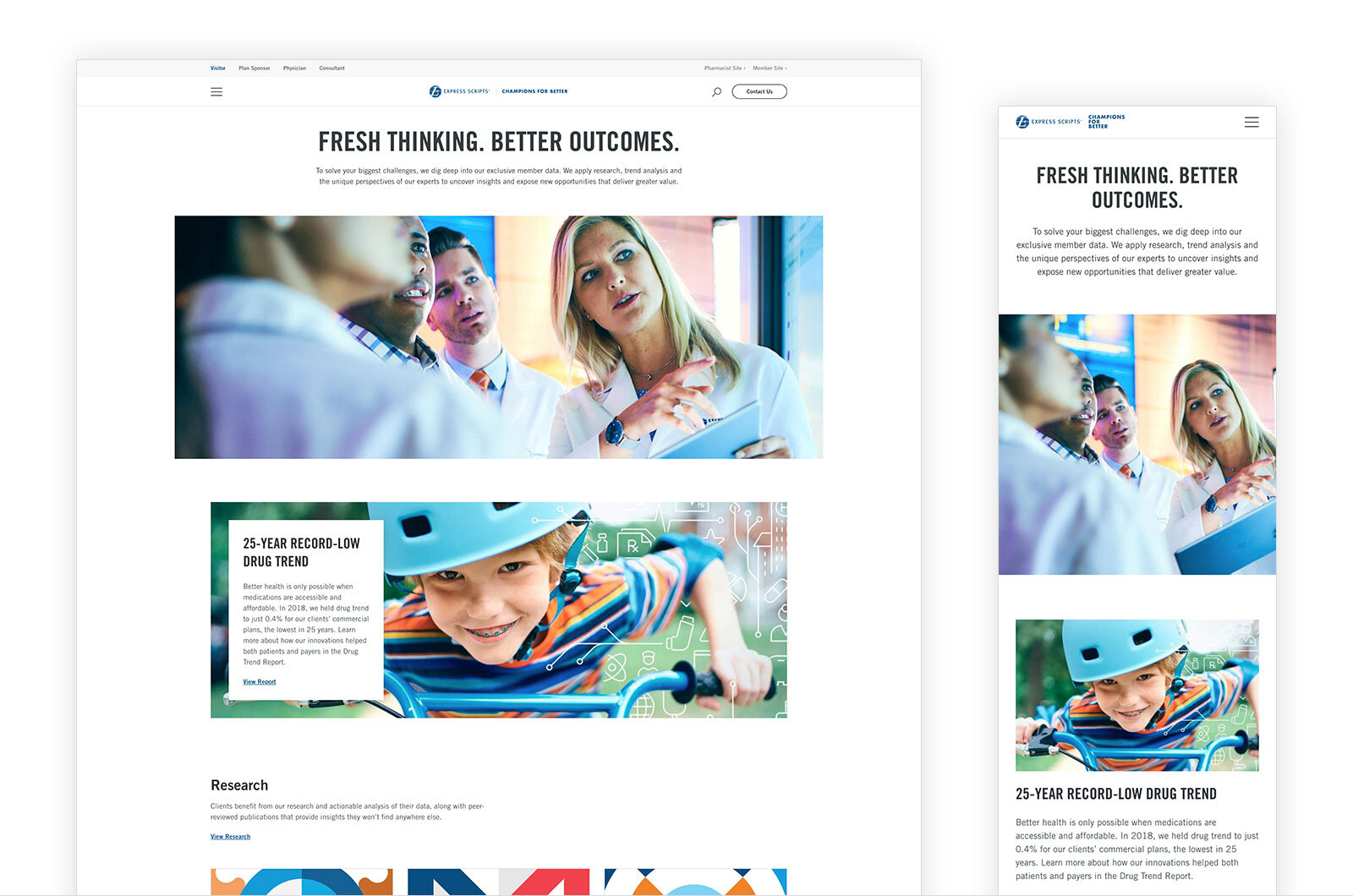
In 2019, I led Discovery and Definition for Express Scripts, the largest pharmacy benefit manager (PBM) in the United States
The challenge: Express Scripts’ web platforms did not aid the B2B sales journey nor did they represent the recently-launched “Champions for Better” brand promise.
The objective: Create a world-class corporate and B2B experience befitting of a Fortune 25 company, one that positions Express Scripts as a force for good within healthcare while supporting prospect clients in their Buyer’s journey.
The solution: Lead a team to research and improve the Buyer journey. Design a new experience illustrative of this new journey. Run a series of client workshops to secure consensus toward a Corporate/B2B site “MVP”.
The result:
A focused scope of work including a prioritized Corporate and B2B feature set.
Other results included:
– 21 “potential solutions”
– 8 enriched “hero” features
– A first-pass information architecture (new sitemap and updated site structure)
– A prioritized list of features for the first “MVP” release
Project establishment:
Establish project goals and audiences
To kick things off, I distilled the brief down to a clear goal. Each part of the goal had a clear set of objectives. As a team, we understood that if we met each objective, we’d meet the overall goal of the project.
Distilled project goal
We tasked ourselves to meet each objective in order to meet the overarching project goal
I worked closely with the Express Scripts' leadership team to determine key details surrounding their core audiences. This included their needs and objectives, the relationship between each audience type within the broader PBM ecosystem, and who were central to the success of the project (primary) and were not (secondary).
Audience ecosystem and relationships diagram
Discovery
Part 1: Research
I directed and coordinated 3 teams on the Experience side of the R/GA house, each with their own stream of work: Experience Strategy, Experience Design, and Content Strategy.
The Experience team plan of attack
The Experience team plan of attack – digitized
Experience Strategy: end-user interviews
Once the audience types were defined, we worked closely with our client to coordinate a panel of people representative of Express Scripts’ end-users. Where we were unable to set up interviews with end-users, we instead reverted to “Subject Matter Experts” (proxy end-users).
Stakeholder interviews: interview script
User interview findings
Experience Design: UX audit
For Experience Design, existing Express Scripts platforms were audited against a set of UX heuristics. A number of competitor platforms (CVS Health and others) were also audited to illustrate the competitor landscape within the PBM space. A number of non-PBM “best in class” websites were also reviewed to illustrate best practice.
Example recommendation from the UX audit
Example recommendation from the UX audit
Example recommendation from the UX audit
Content Strategy: content audit, content gap and migration plan
Over 200 pages (evergreen pages and published/article content) was inventoried. Each page was audited, given a score and ranked based on recency, relevancy and engagement. This formed the foundation for the gap analysis and migration plan that determined what content was to be retired, reused or repurposed on the new platform.
The complete content inventory
Example recommendation from the content audit
Migration plan for existing content
Part 2: Synthesis
Turning research findings into opportunities
Once each workstream was complete, the teams’ findings were synthesized into a set of insights, implications and early recommendations, which we called “Opportunities”. The output of the Discovery phase resulted in 21 Opportunities being created.
Turning opportunities into potential solutions
From the Opportunities, a number of early wireframes were created aimed at answering these opportunities. We called these wireframes “Potential Solutions”.
Mapping the Express Scripts’ Buyer journey
A further output of the project’s Discovery phase was the “Buyer” experience map. Informed by the majority of the teams’ research activities, this map plotted the journey of the Express Scripts’ Buyer audience across a marketing/sales funnel as well a a 36-month client lifecycle.
All experience map inputs
The team working through the inputs
The experience map: Post-it version
Various iterations of the final map
The final Express Scripts Buyer Experience Map
Workshop preparation
In preparation for the upcoming 2-day workshop, I curated a facilitation deck to take with us to St. Louis, Missouri. The final deck included check-ins, progress reports, energizers, as well as a healthy mix of divergent and convergent activities focused on definition, ideation and prioritization. A selection is shown below:
Definition
Part 3: Client workshop day 1
Understanding and “potential solution” prioritization
Stakeholders were taken through the experience map stage-by-stage. Each opportunity and potential solution was discussed. Any missing details were added along the way:
Prioritizing potential solutions
Potential solutions were then decided on using Dotmocracy, a form of silent voting:
The newly-prioritized potential solutions represented 8 opportunities of high-value and high-interest for our client. These 8 opportunities formed the foundation of the second day of the workshop:
Example opportunity
Example opportunity
Example opportunity
Example opportunity
Part 4: Client workshop day 2
Ideation
Using the 8 prioritized and high-value opportunities from day 1, the team ran 8 ideation and enrichment exercises. Through these exercises, ideas were fleshed-out, with some being turned into tangible concepts:
Ideation activities included iterations of Idea Speed Dating and Crazy Eights. Participants were encouraged to make ideas tangible, with each team having the opportunity to presented concepts to the wider group. By doing so, each idea or concept gained investment from a wide-variety of Express Scripts stakeholders:
Finally, winning concepts were again voted for using dotmocracy:
The result
Each “winning” enriched idea/concepts formed the foundation of the 8 “hero” features that would make their way in to the first-release “MVP” for the new Express Scripts Corporate and B2B platform.






